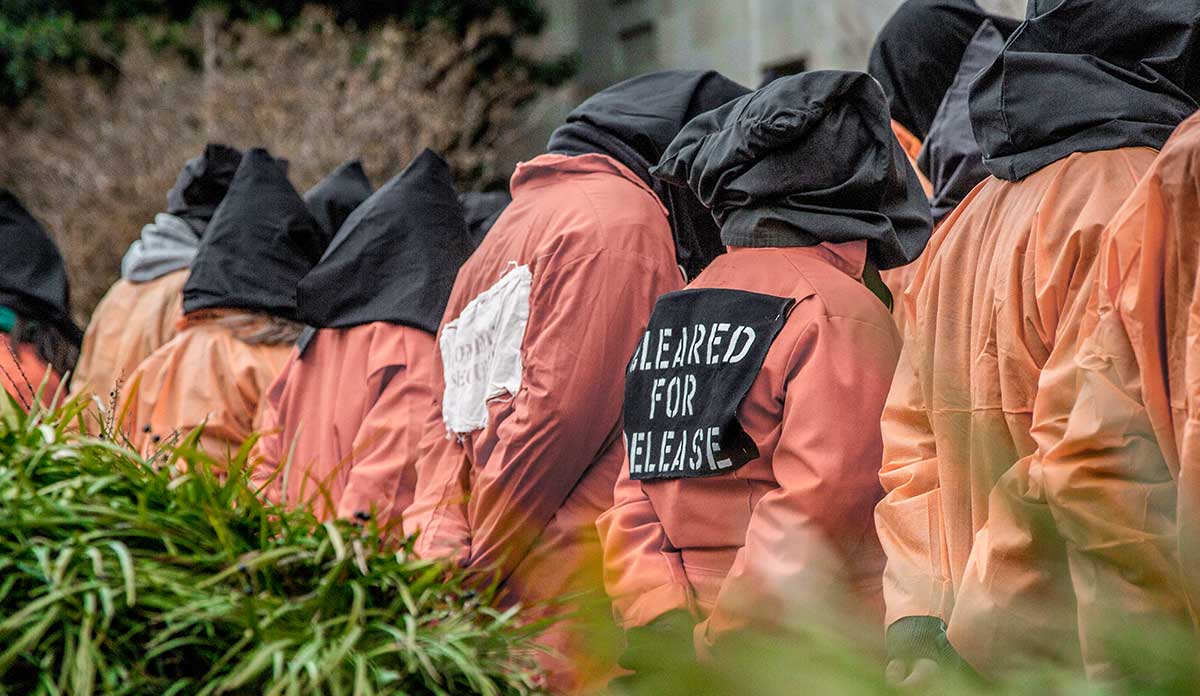“Flashback come. Flashback come many time you know…,” said Suleiman Abdullah Salim to the American Civil Liberties Union (ACLU). A Tanzanian fisherman who is a victim of U.S. sanctioned torture, Mr. Salim was never charged with a crime. He now lives with the lasting effects of his ordeal, including severe depression and post-traumatic stress disorder. He has no access to psychological treatment, but has found solace in caring for pigeons. Suleiman built his pigeon coup with the same specifications as one of his cells.
Torture is a crime against humanity and a war crime. It is defined by the Convention against Torture and Other Cruel, Inhuman or Degrading Treatment or Punishment (CAT) as state-sponsored and intentional infliction of severe pain for the purposes of information gathering, punishment, or intimidation. The CAT definition falls short of the immensity of the practice.
The U.S. did not simply torture some folks. Psychologists James Mitchell and Bruce Jessen were paid $81 million to engineer for the CIA a programmatic and systematic system to break down a person’s humanity in order to achieve “learned helplessness,” a term coined in the 1960s when researchers achieved it in dogs. Human rights lawyer George Annas, Dr. Sondra Crosby and Dr. Michael Grodin, Boston University professors and founders of the NGO Global Lawyers and Physicians, put the number of people detained for questioning by the U.S. at some point around 100,000. An unspecified number of those people were tortured.
Method to the Madness
The U.S. Senate Select Committee on Intelligence released its report on the U.S. torture program in 2014. The report outlined several important points. First, it confirmed that a systematic torture program was in place. Second, the vast majority of victims were never charged with a crime. Third, the report suggested that torture is not effective for producing any viable information. People will say whatever they need to in order to get the torture to stop. Finally and most importantly, the report outlined the torture methods used. Torturers used their methods in combination and consecutively to inflict maximal suffering. Language was arguably the first and most frequently wielded weapon. As the report states, one interrogator told a detainee that he would never escape because: “We can never let the world know what I have done to you.” Interrogators were desensitized to the acts and rationalized committing them through medically euphemized language.
.

Living with Trauma
Williams and Merew describe torture as a practice that targets all facets of a person — the physical, emotional and social. They write in the British Journal of Pain that, “[Post-traumatic stress disorder] is an inadequate description of the magnitude and complexity of the effects of torture.” Torture survivors have “elevated rates of anxiety, depression, and adjustment problems, including outbreaks of anger and violence directed towards family members.” Torture-survivors tend to be socially isolated, impoverished and have trouble finding employment.
“[Post-traumatic stress disorder] is an inadequate description of the magnitude and complexity of the effects of torture.”
Steel, et al., examined the association of torture and mental health outcomes in populations exposed to mass conflict and displacement. They found that in refugees who had PTSD, the strongest associated factor was past torture (Odds ratio (OR): 2.01). This effect was stronger than cumulative exposure to potentially traumatic events (OR: 1.52), time since conflict (OR: 0.77), and assessed level of political terror (OR: 1.60). They stressed that their findings “should…assist health professionals in their efforts to advocate against human rights abuses and the implementation of international treaties prohibiting the use of torture…[and] to highlight the mental health needs of affected populations…”
Policy and Practice
The program has far reaching systemic consequences to the U.S., perhaps most importantly in the realm of national security. The Senate report noted the U.S. standing in the world was badly damaged by instituting a torture program, creating tensions with allies and costing significant amounts of money because of the extra defense spending that is now needed.
But the survivors of the program bear the scars, and the first-hand proof, of a dark chapter of U.S. history. Moreover, the U.S. is not alone in these practices. Amnesty International exposed the prison torture practices of the Bashar Al-Assad led Syrian government in August of 2016. Currently in Chechnya, the Russian government is torturing and murdering gay men in concentration camps. The UN recently condemned torture of detainees by Afghan police and security forces.
During the opening address for the United States at the Nuremberg Trials in 1945, Robert H. Jackson said: “The wrongs which we seek to condemn and punish have been so calculated, so malignant and so devastating, that civilization cannot tolerate their being ignored because it cannot survive their being repeated.” A healthy, well-functioning society does not torture people. Policy and practice must reflect that. Yet Trump has explicitly said that he is willing to continue or expand the use of torture, saying that he’ll bring back waterboarding and practices that are “a hell of a lot worse.” This begs the question: What could possibly be worse?
Feature image: Justin Norman, Cleared Shrubs, used under CC BY-NC-ND 2.0/cropped from original













